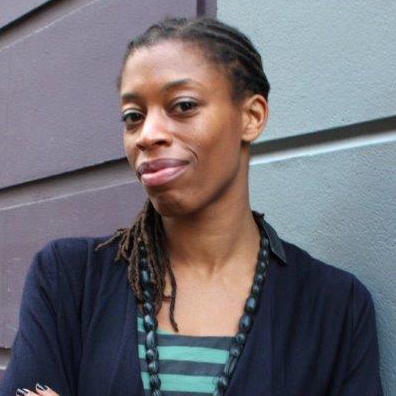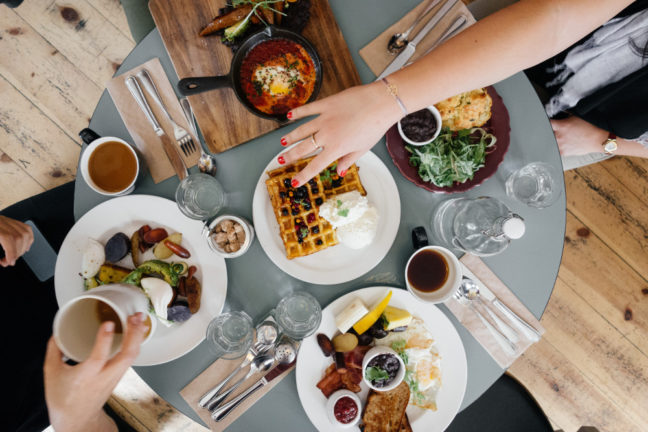When you think of a traditional team-building activity, what comes to mind? Muddy assault courses, paintballing, a sports competition or even the newer trend of escape rooms? These have all come to define the typical types of activities to help team members bond – intense situations where they need to quickly figure out how to work as a team.
 Alison Coward, Founder, Bracket; alison@bracketcreative.co.uk
Alison Coward, Founder, Bracket; alison@bracketcreative.co.uk
Alison will be speaking at the 10th Annual Business Analysis Conference Europe 24-26 September 2018, on the subject, “Initiating and Leading Collaborative Projects“
These energetic activities can serve to boost team morale – but how effective are they for long-term team-building? Unless they’re combined with ongoing team-building throughout the year, they go no further than “ a fun day”. That might have a positive purpose in itself, but it’s not something that will build a team on its own, particularly if there are real problems that a team is experiencing in its culture.
Working in teams is so vital to the success of today’s organisations, that we can’t leave team-building for an extraordinary annual event. We need something that that reflects the reality for the current era of work. We need more natural ways of integrating this into our days.
Effective team-building focuses on the two most important factors of teamwork – creating good communication and trust between team members. When this is addressed, it leads to better engagement and productivity in the workplace. This is not something that comes by a one-time event, or just by getting on with the work itself. It builds up little by little over time, and is done intentionally. There’s evidence to show that shared social activities in the workplace lead to employee wellbeing and that sustained, repeated activities work best.
The importance of social connection and trust at work
Since Google’s Project Aristotle – the company’s internal investigation into what made its most high-performing teams – the concept of “psychological safety” has started to become part of the workplace vocabulary. Psychological safety was first defined by academic Amy Edmondson, and describes the level of safety that teammates feel to be vulnerable, take risks and make mistakes in front of each other.
Although not exactly the same, psychological safety is linked to trust, and there is a positive relationship between trust and team performance. Trust is something that can develop naturally over time, but it’s also something we can foster through team-building. This can be as simple as sharing a personal story, to encourage team members to find things they have in common. All this seems easy enough, but it’s not necessarily something we’d think to do when we’re head down in our work.
Fostering social connections matters too. Research has shown that having a best friend at work can greatly increase productivity. Some go as far as to say that managers should build teams around groups of friends. While it might not be possible to have close relationships with everyone we work with, we should at least know them well enough to make teamwork easier.
It’s not just that fostering social connections and building trust makes teamwork easier. It’s that the opposite – incivility – can have a detrimental effect. Christine Porath has been researching the impact of workplace incivility on workers and found it can take quite a toll – on performance, employee turnover and even on customer experience.
The role of workplace rituals
So how do we start to integrate team-building into a more regular, everyday activity? It comes down to the habits, routines and rituals that we intentionally design to support or build our team’s culture.
In their research paper “Ritual Design: crafting team rituals for meaningful organizational change”, F. Kurzat Ozenc and Margaret Hagan of the Ritual Design Lab explored the existing literature on workplace rituals to find that:
“rituals have a special power to bring people together and give them a sense of purpose, values, and meaning”
and
“among the goals of the rituals, cohesion was the dominant theme. Teams found rituals to have promise for creating bonds, a sense of identity, and strengthening superficial relationships.”
But it wasn’t just the ritual itself that mattered. They found evidence to show the people that engaged in intentional design and prototyping of rituals enjoyed the activity. The development of workplace rituals can be a collaborative process. To create workplace rituals that work, SY Partners provides three rules – they are actionable, they address a problem, and change them if they don’t work.
Examples of powerful workplace rituals:
Check-in rounds: At the beginning of a meeting, rather than launch straight into the agenda, the team at Range Labs they take a short time to pose a question that everyone will individually answer in turn – usually related to how they are doing. After a few months, the team started to understand more about their colleagues’ personal lives, creating more empathy and leading to better teamwork.
Personal storytelling: Zach Klein, the founder of DIY, wanted to create more connections within his team. Each Friday morning, over bagels and coffee, the team get together and share something that they are doing outside of work. The process is kicked off on Thursday, with someone sending a link to a blank Google presentation. Everyone adds a couple of slides, ready for the next day.
Fika: This is a Swedish tradition where workmates take breaks together at set times of the day (around 11 am and/or 3 pm) for coffee and pastries and switch the conversation to non-work topics. Fika not only helps to build social connections but increases productivity too, as this Swedish worker found who introduced it to her London office. The Quartz at Work team also tried this, with varying results!
Lean Coffee: An energetic and interactive meeting, inspired by the ‘open space’ format, that has no pre-designed agenda, which instead is created on the day by the people that attend. The team at Stride have enjoyed this format for creating more inclusion and hearing a wider set of voices. Everyone shares topics that they would like to discuss, and then there’s a voting session to decide what will be covered.
Eating together: If it sounds like a lot of these rituals have food involved, there’s a reason. In his research, Kevin Kniffin of Cornell University found a connection between shared meals and team effectiveness. His 15-month study into the eating culture of US firefighters found that the teams that ate dinner together also performed better together.
Assess your rituals for inclusivity
Workplace rituals can build authentic connections in a team, and having them in place also comes with a responsibility to ensure they don’t have a negative knock-on effect beyond their original intent.
A team of behavioural scientists found that some of the rituals that created a strong team culture also resulted in creating divides with other teams. Elaborate rituals had more of an impact, but even small actions performed together were enough to create in-group/out-group boundaries.
If not implemented carefully, rituals may even create exclusion within teams. There are some activities that people cannot or don’t want to participate in because of their backgrounds, personal situations or preferences. Beer and pizza on a Thursday evening might sound like a simple way to get everyone together – but who might that exclude? And definitely make sure that they don’t fall into the camp of “mandatory fun”, which is no fun at all.
Rituals need to be as inclusive as possible to ensure everyone can take part. Key questions to ask: is this something that everyone can feel comfortable participating in? What is the impact on overall company culture? What happens if someone wants to opt-out?
When you’re next considering how to build more connection and trust in your team, think beyond big one-off activities, and more towards repeatable rituals that work to develop authentic relationships. Even better if you select a specific teamwork challenge to address and work with your team to design an inclusive activity that integrates nicely into your daily work.
Alison Coward is the founder of Bracket and author of “A Pocket Guide to Effective Workshops”. She is a strategist, trainer and workshop facilitator. With over 15 years’ experience of working in, leading and facilitating creative teams, Alison is passionate about finding the perfect balance between creativity and productivity. At Bracket she helps teams to use the best of their talents to develop great ideas and collaborate to make them happen.
Image credit: Unsplash
Copyright Alison Coward, Founder, Bracket


